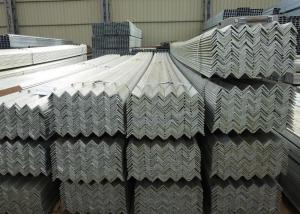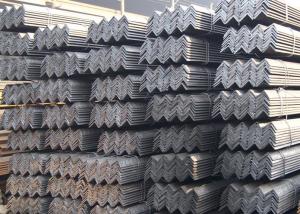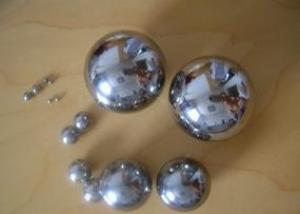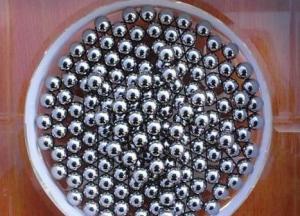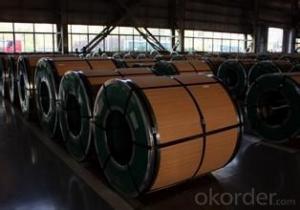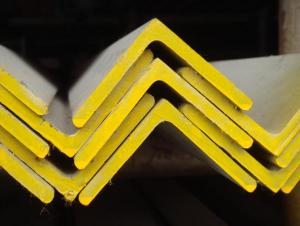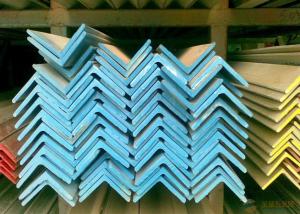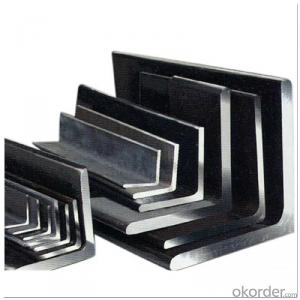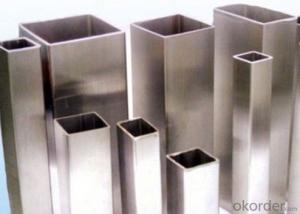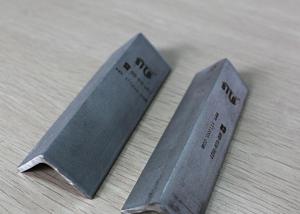Stainless Steel Angles Equal Shape
- Loading Port:
- China Main Port
- Payment Terms:
- TT or LC
- Min Order Qty:
- 1 Ton m.t.
- Supply Capability:
- 2000 Tons Per Month m.t./month
OKorder Service Pledge
OKorder Financial Service
You Might Also Like
Stainless Steel Angles
1.Grade: SS200,300,400 series
2.Size: 25×25×3 mm-100×100×10mm
3.Process: HRAP
4. Length: 2-6m
5. Shape: Equal
6. Delivery: within 20 days
7. MOQ: 1 ton
8. Certificate: ISO 9001:2008, SGS
9. Package:Standard Export Packing, or put into wooden boxes according to your
requirement
10. Application: Construction, Marine, Industry and so on
Name | Stainless Steel Angles | ||||||
Standard | ASTM A554, A312, A249, A269 and A270 | ||||||
Material Grade | 304,316,201,202, 316L,430 | ||||||
Length | 6m or as customers' request | ||||||
Tolerance | a) thickness: +/-0. 15mm | ||||||
| |||||||
b) Length:+/-4. 5mm - 0mm | |||||||
Surface | 180G, 320G, 400G Satin / Hairline(Matt Finish, Brush, Dull Finish) 400G, 500G, 600G or 800G Mirror finish | ||||||
Application | Decoration construction, upholstery, industry instruments | ||||||
Test | Squash test, Extended test, Water pressure test, Crystal rot test, Heat treatment, NDT | ||||||
Chemical Composition of Material |
Composition
Material | 201 | 202 | 304 | 316L | 430 | |
C | ≤0.15 | ≤0.15 | ≤0.08 | ≤0.08 | ≤0.12 | ||
Si | ≤1.00 | ≤1.00 | ≤1.00 | ≤1.00 | ≤1.00 | ||
Mn | 5.5-7.5 | 7.5-10 | ≤2.00 | ≤2.00 | ≤1.00 | ||
P | ≤0.06 | ≤0.06 | ≤0.045 | ≤0.045 | ≤0.040 | ||
S | ≤0.03 | ≤0.03 | ≤0.030 | ≤0.030 | ≤0.030 | ||
Cr | 16-18 | 17-19 | 18-20 | 16-18 | 16-18 | ||
Ni | 3.5-5.5 | 4-6 | 8-10.5 | 10-14 |
| ||
Mo |
|
|
| 2.0-3.0 |
| ||
Mechanical Property | Material Item | 201 | 202 | 304 | 316L | ||
Tensile Strength | ≥535 | ≥520 | ≥520 | ≥520 | |||
Yield Strength | ≥245 | ≥205 | ≥205 | ≥205 | |||
Extension | ≥30% | ≥30% | ≥35% | ≥35% | |||
Hardness (HV) | <253 | <253 | <200 | <200 | |||
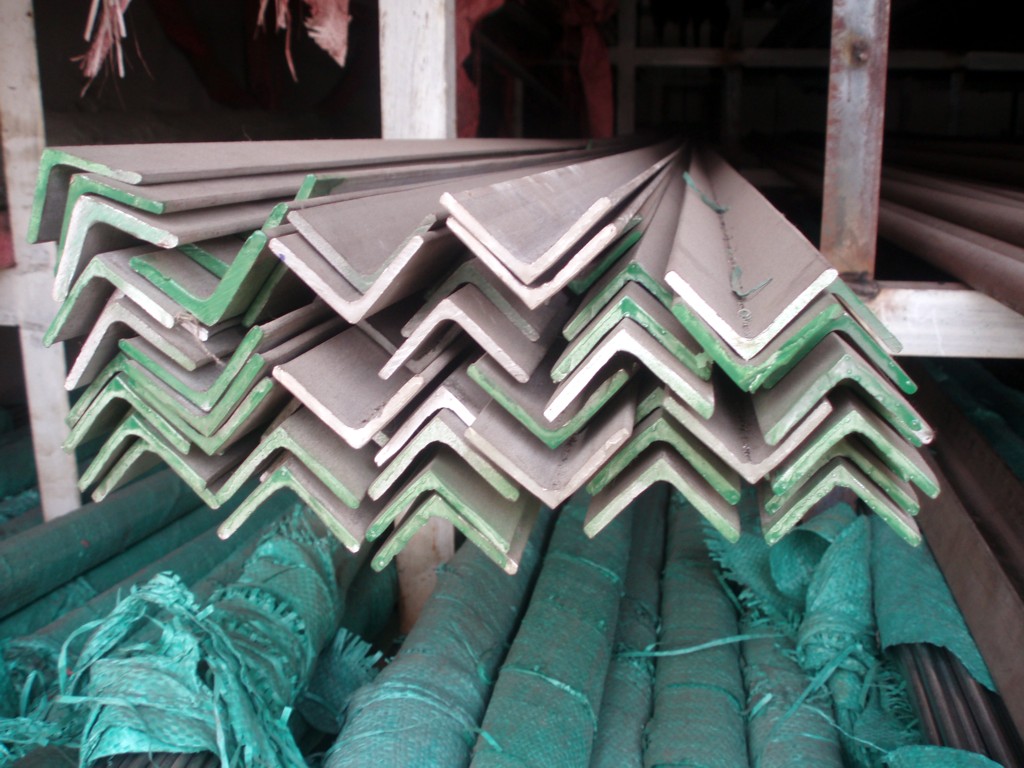
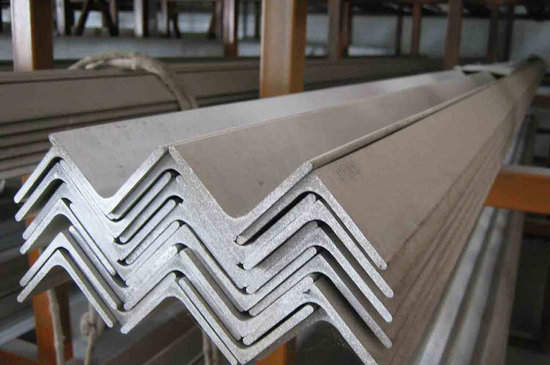
- Q:Can stainless steel angles be used in the food processing industry?
- Yes, stainless steel angles can be used in the food processing industry. Stainless steel is a popular material choice in this industry due to its excellent corrosion resistance and durability. It is resistant to staining and does not react with food or cleaning agents, making it hygienic and safe for use in food processing environments. Stainless steel angles are often used for constructing food processing equipment, such as conveyors, platforms, and supports, as they provide structural strength and stability. Additionally, stainless steel is easy to clean and maintain, which is crucial in maintaining high standards of cleanliness in the food processing industry.
- Q:What are the surface finish options for stainless steel angles?
- The surface finish options for stainless steel angles include a variety of options such as mill finish, brushed finish, mirror finish, satin finish, and bead blasted finish.
- Q:Can stainless steel angle be used in power generation facilities?
- Stainless steel angle is indeed applicable for power generation facilities. Its remarkable corrosion resistance and robustness make it appropriate for the demanding conditions typically present in such environments. It is frequently employed for different purposes, including supporting structures, brackets, and frames for machinery and equipment. By offering strength and stability, stainless steel angle guarantees the endurance and durability of the structures within power generation facilities. Moreover, stainless steel possesses high temperature resistance and can endure the thermal pressures commonly encountered during power generation procedures. Its ability to resist oxidation and erosion renders it an ideal material for implementation in power plants, encompassing nuclear, thermal, and renewable energy facilities.
- Q:How do stainless steel angles contribute to seismic resistance?
- Buildings and structures benefit greatly from the versatility of stainless steel angles as they enhance seismic resistance. These angles play a crucial role in various ways. To begin with, stainless steel angles possess remarkable mechanical properties, including high strength and ductility. This enables them to withstand the powerful forces generated during earthquakes. They effectively resist bending, twisting, and shearing forces, thereby providing structural stability and integrity to the building. Furthermore, stainless steel angles offer exceptional corrosion resistance, which proves advantageous in seismic regions prone to high levels of moisture and humidity. By maintaining their structural integrity over time, these angles ensure the building's long-term stability and performance during seismic events. Moreover, the ease of welding and fabrication of stainless steel angles allows for efficient construction processes. This versatility empowers engineers to design and construct seismic-resistant systems more effectively. They can incorporate features such as moment-resisting frames, braced frames, or other seismic-resistant structural systems. In addition, stainless steel angles exhibit high fire resistance, a critical factor in seismic design. In the event of a seismic event followed by a fire, these angles can withstand high temperatures for extended periods without compromising their structural strength. This characteristic ensures the building remains stable and safe for occupants and emergency responders. Lastly, stainless steel angles offer numerous design opportunities due to their aesthetic appeal and architectural versatility. Architects and designers can incorporate these angles into the overall design, creating visually appealing structures that meet the required seismic resistance standards. In conclusion, stainless steel angles contribute significantly to seismic resistance by providing high strength, ductility, corrosion resistance, fire resistance, and design flexibility. These properties enable them to withstand the dynamic forces generated during an earthquake, ensuring the structural stability and integrity of buildings in seismic regions.
- Q:What are the chemical resistance properties of stainless steel angle?
- Stainless steel angle has excellent chemical resistance properties due to its high chromium content, which forms a protective oxide layer on the surface. This oxide layer prevents corrosion and makes stainless steel angle resistant to various chemicals, including acids, bases, and many organic compounds.
- Q:How does stainless steel angle perform in high-vibration environments?
- In high-vibration environments, stainless steel angle exhibits exceptional performance. Its unique composition grants stainless steel excellent mechanical properties and a high resistance to corrosion, making it an ideal material for enduring vibrations. By incorporating chromium and nickel into stainless steel, its durability and strength are enhanced, enabling it to withstand the stresses caused by vibrations. Furthermore, stainless steel angle demonstrates superior fatigue resistance, ensuring it can endure repetitive vibrations without significant degradation to its structural integrity. Moreover, stainless steel's high ductility allows it to effectively absorb and dissipate vibrations, reducing the risk of damage or failure in high-vibration environments. Additionally, stainless steel's resistance to temperature changes guarantees consistent performance even in extreme conditions. Consequently, stainless steel angle proves to be a reliable and durable material choice for applications involving high-vibration environments.
- Q:Can stainless steel be ground?
- No, because the conductivity of stainless steel is very low, lower than iron, not to mention the general metal for good conductors, such as copper and aluminum. (the conductivity meter of metal is over here. There is a need. Please search it at Niang)
- Q:Can stainless steel angles be cut to a specific length?
- Indeed, it is possible to cut stainless steel angles to a specific length. These angles made of stainless steel possess great flexibility and can be cut to any desired length through the utilization of different cutting tools, including band saws, circular saws, or plasma cutters. To achieve the intended length, one must first measure the angle accurately and then employ the suitable cutting tool to adjust it accordingly. It is crucial to employ the correct cutting technique and tools to guarantee a pristine and accurate cut, thus preserving both the structural integrity and aesthetic appeal of the stainless steel angle.
- Q:Can stainless steel angles be used in temperature extremes?
- Yes, stainless steel angles can be used in temperature extremes. Stainless steel is known for its excellent resistance to high and low temperatures, making it a suitable material for various applications in extreme temperature conditions. It can withstand both extremely high temperatures, such as those found in industrial furnaces, as well as extremely low temperatures, such as those in cryogenic applications. Stainless steel angles maintain their strength, durability, and corrosion resistance even when exposed to temperature extremes, making them a reliable choice for various industries including aerospace, automotive, chemical, and food processing.
- Q:Can stainless steel angles be used in medical applications?
- Yes, stainless steel angles can be used in medical applications. Stainless steel is widely used in medical devices and equipment due to its excellent corrosion resistance, durability, and ease of sterilization. Stainless steel angles, which provide structural support and reinforcement, can be utilized in various medical applications such as surgical instruments, implants, orthopedic devices, and medical equipment. The high strength and resistance to corrosion make stainless steel angles suitable for use in sterile environments and ensure long-lasting performance. Additionally, stainless steel is biocompatible, meaning it does not react with bodily tissues or fluids, making it safe for use in medical applications.
1. Manufacturer Overview |
|
|---|---|
| Location | Zhejiang, China |
| Year Established | 2010 |
| Annual Output Value | above US$16 million |
| Main Markets | East Asia, Middle East. |
| Company Certifications | |
2. Manufacturer Certificates |
|
|---|---|
| a) Certification Name | |
| Range | |
| Reference | |
| Validity Period | |
3. Manufacturer Capability |
|
|---|---|
| a)Trade Capacity | |
| Nearest Port | Shanghai |
| Export Percentage | |
| No.of Employees in Trade Department | above 10 people |
| Language Spoken: | English, Chinese |
| b)Factory Information | |
| Factory Size: | about 30000 square meter |
| No. of Production Lines | above 7 |
| Contract Manufacturing | OEM Service Offered |
| Product Price Range | Average |
Send your message to us
Stainless Steel Angles Equal Shape
- Loading Port:
- China Main Port
- Payment Terms:
- TT or LC
- Min Order Qty:
- 1 Ton m.t.
- Supply Capability:
- 2000 Tons Per Month m.t./month
OKorder Service Pledge
OKorder Financial Service
Similar products
New products
Hot products
Related keywords
